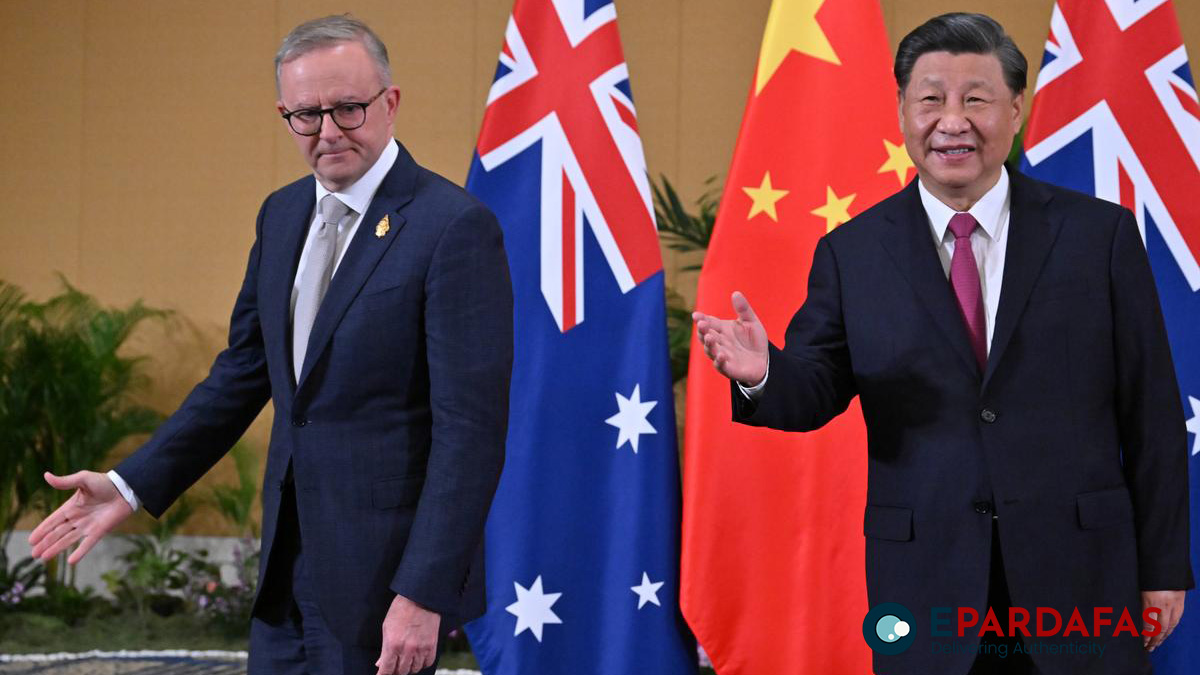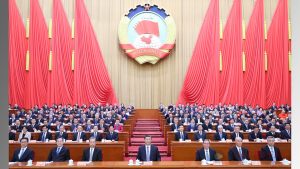
China wrings its hands wryly as Australia merrily challenges its Indo-Pacific designs
China seems to have fallen in a deep paradoxical situation regarding its engagement with Canberra as days after it welcomed Australian Prime Minister Anthony Albanese in the Great Hall of the People in Beijing during his four-day state visit in early November, it saw warily the Oceania country conducting joint sea and air patrols with the Philippines in the South China Sea.
The joint sea and air exercise from November 25 to 27 saw four vessels and five aircraft from the Philippines and one frigate and one reconnaissance aircraft from Australia taking part in the first kind of drills between the two countries in the South China Sea, claimed 90% by China. Significantly, as per Reuters, the Australian frigate named Toowoomba passed through the contentious Taiwan Strait in its journey towards the South China Sea for the joint naval and air drills.
Riled by the Australian warship’s deliberate crossing through the Taiwan Strait, China’s Foreign Ministry Spokesperson Mao Ning issued a terse statement: “China’s position is clear and consistent. We urge parties concerned not to make provocations or create trouble for peace and stability in the Taiwan Strait.” In recent years, the US and its allies’ warships have routinely sailed through the Strait, drawing China’s anger.
On November 25, US missile destroyer Hopper entered the South China Sea, Global Times said, quoting the People’s Liberation Army’s Southern Theatre Command Spokesperson as saying. Earlier on November 2, a US guided-missile destroyer Rafael Peralta (DDG-115) and Royal Canadian Navy’s Halifax-class frigate HMCS Ottawa (FFH-341) made a transit through the Taiwan Strait.
Timing of these warships’ movement along the Strait assumes high significance as it has taken place at the time when there are reports of China may resort to attack Taiwan once the presidential election in the self-ruling island in January 2024 is over. “Taiwan is fast approaching its next presidential election in January 2024. Once that vote is over, Beijing may try to discipline Taiwan’s new government by demonstrating how formidable Chinese power—military and otherwise—is,” Hal Brands, a senior fellow at the American Enterprise Institute and a co-author of “Danger Zone: The Coming Conflict with China,” said in his article in Bloomberg.
China, which feels Australia is exacerbating tension in the region, has a condescending attitude towards Canberra, especially with regard to the economy. It thinks Australia will fail to give a push to its growth and face an economic crisis in the absence of a big Chinese market. “Without China, Australia would have a trade deficit every year,” Global Times quoted Shandong University Professor Yu Lei as saying.
“China is Australia’s most important source of industrial semi-finished goods, and without these products, many manufacturing industries would shrink or even collapse,” Yu Lei told the Chinese Communist Party’s mouthpiece. But several analysts say it is misjudgement on the part of China about the Australian capability. If one carefully analyses the action of Australia, it becomes clear that it is not “yielding to China’s economic might,” but is making a cold calculation based on its strategic interests, Nikkei Asia said.
Indeed, a glance at Australian Prime Minister Anthony Albanese’s statement he made before embarking on a visit to China on November 4-7, indicates clearly that Canberra plays its cards with Beijing very intelligently. He told media persons, “We need to cooperate with China where we can, disagree where we must and engage in our national interests.”
In September 2021, giving security a priority, Australia joined the US and the United Kingdom in establishing AUKUS, a security framework, which is described by Beijing as “a typical case of Cold War mentality.” Under its defense partnership, Australia would acquire nuclear-powered submarines from the US and build a strong deterrent against China in the Indo-Pacific region.
It is said Australia’s decision to participate in the joint sea and air drills in the South China Sea with the Philippines is a part of its ongoing deterrent strategy against Beijing.
China’s unchecked militarization of the South China Sea and aggressive posturing across the Pacific are cited as the key reason behind Australia’s such strategic moves and it is doing all this without succumbing to Beijing’s charm offensive even as it tries its best to use economic cooperation as bait.
Canberra is not just strengthening alliance with the Philippines but is also working to build an “anti-China encirclement” with Japan and South Korea in the region, Nikkei Asia said. In early September, the Australian Air Force deployed six F-35 A Lightning II aircraft to Japan for the first time as part of Exercise Bushido Guardian 2023. Australia will participate in the military exercise Yama Sakura as a full participant for the first time with more than 150 personnel travelling to Japan in December, Australia’s Foreign Affairs Ministry said.
With South Korea, the Australian defense cooperation in the Indo-Pacific region is strengthening year by year. For this year’s Exercise Talisman Sabre, a multinational military exercise led by Australia and the US, the South Korean Navy and Marine Corps had sent the largest-ever contingent. Last year, the South Korean Air Force participated in Pitch Black exercise, yet another multinational exercise held in Australia’s Darwin Air Base. NATO has planned to upgrade ties with Australia, New Zealand, Japan and South Korea which are known as the Asian- Pacific partners (AP4).
These developments show how Australia has projected and protected its interests in the Indo-Pacific region without capitulating to China’s pressure tactics verging on the economy.
















Comments